
When you’re late for the race, it’s hard to make up. The only way you stand a good chance is not to run fast, but to run smart…pretty much what the industry is trying to do with influencer marketing. And this is where one kind of Influencers make perfect sense both ways. Enter Nano Influencers.
So many brands remain stuck to this day relying on inappropriate –influencer marketing strategies that don’t pan out as expected. Neither in terms of business results. What they fail to realize is that if they want to reach, connect with, and engage relevant customers, they need to get real. Both in terms of their association as well as expectations. Nothing can work against that as quickly as an inadequately thought-through, attention-seeking celebrity endorsement.
Marketing through Influencers looks at hand-picking the right, niche influencers for you. The very real, relatable, average Joe, someone who has an active interest in your category or brand, knows his/ her way around its products and has a tight community of like-minded individuals he interacts with. Think of him (or her) as your very own Avenger. Remember how in the Avengers, Stark is known for technology, Captain America for planning and strength, Hulk for brute power at scale, and so on? Each character has its own set of loyal followers, too. Influencers work like that. They’re people well-known within their close-knit networks for their particular expertise – and therefore trusted for it. What does that make you? Nick Fury comes to mind…has a nice ring to it, doesn’t it?
Power-up Tip: Most of the time, the Influencer’s are right in front of you. They are among your Employees, Customers, Fans, Partners… Pity we did not look inside earlier!
Why not target at scale with macro or micro influencers?
Let’s start with the math and then follow through with data on why Nano.
- Nano-influencers: 1,000-10,000 followers
- Micro-influencers: 10,000-50,000 followers
- Mid-tier influencers: 50,000-500,000 followers
- Macro-influencers: 500,000-1 million followers
- Mega-Influencers: 1 million+ followers
Influencers for Engagement:
While you’d be perfectly justified to be tempted to go for a single large influencer rather than a series of influencers, what you need to know is that an influencer’s following is much more engaged than a micro or macro influencer’s following. And influencer marketing is nothing if it isn’t about engagement. The final goal of any influencer marketing campaign is to make the audience engage with the influencer content so much that they feel compelled to take action. A recent HypeAuditor report titled “The State of Influencer Marketing 2019” found that influencers have an engagement rate that is more than twice as high as that of other communities of influencers.
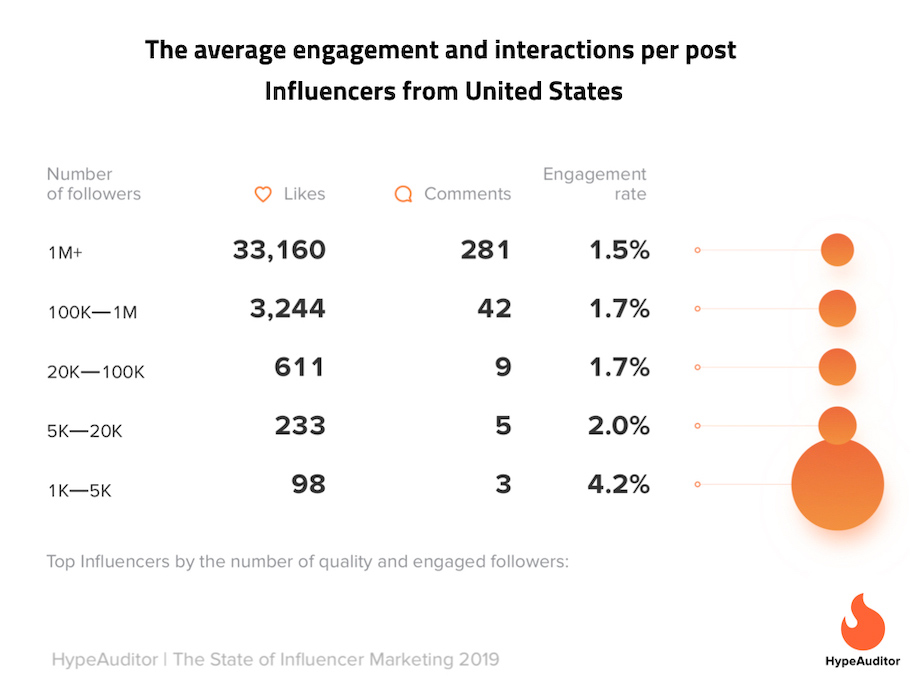
A high engagement rate has a massive impact on reach, and consequently, on the viewership of sponsored posts. This in turn significantly reduces the cost per impression and engagement. Thus, even the most niche brands find success when they employ influencers who have the right target audience for them.
This is because influencers have already established a strong, one-on-one dialogue with their audience, and are more likely to provide meaningful responses to almost every comment. They don’t just toss a catchphrase but spend time on understanding audience sentiment and where it comes from. Thus, they even become treasure troves of information in terms of customer feedback for product improvements.
Influencers for Trust:
Perhaps equally important is the fact that influencers are as real as they come. That means you don’t have to worry much about fake followers – after all, we’re talking about less than 10,000 followers. In other words, influencers are authentic as well as relatable. This adds immediate and immense credibility to a brand – which is something that big-ticket celebrities of the Hollywood or Instagram variety just can’t replicate. Influencers redefine the saying “less is more.” Many of them are actually regarded as friends by their followers and choose their promotions carefully so that they don’t lose that inherent trust. That means that if they decide to work with you, you automatically gain their audience’s trust.

The core reason for this is that the followers numbers are not inflated by dubious means. Therefore authentic people find authentic connections and engage with their networks. The result? The average engagement rates shoot to almost twice that of celebrities.
Influencers for Cost:
Yet another point of consideration is cost. Influencers are much more reasonably priced than their counterparts with larger fan bases. In fact, many influencers may be perfectly happy to post on your behalf in return for a product, trial, discount, or even fun fan merchandise, as opposed to larger influencers, who mandate monetary compensation. There are other cost benefits associated with influencers – you can reuse their content on your own blog or social media pages (provided you include the clause in your contract), and you can also scale your reach elastically.
When you work with more than one influencer, you can segment your audience by traits, preferences, etc. and effectively personalize your campaigns for better results. This also reduces the risk of an unsuccessful/ ineffectively targeted, generic marketing campaign.
Influencers for Relevance:
Finally, since influencers operate in niche spaces, they offer a very close fit for your brand. This relevance helps you perfectly position your offerings for each audience segment you’re trying to reach. You can thus tailor your campaigns to be more unique by generating original content crafted to have the best impact on each segment. A best practice would be to have an influencer for each focus area, each key message that you want to convey.

Another benefit of this niche targeting is a competitive advantage that it affords you. At present, most influencers occupy an uncontested space. In all possibilities, you might not find any ads from competitors on an influencer’s LinkedIn account. In all probability, your sponsored post is going to be their first advertisement. What does that mean? This is the opportunity for you to create an army of the perfect advocates for your brand.
Power-up Tip: Try 2-3 influencer marketing campaigns to test out the tactic for your brands/s
How do you find influencers?
Since influencers are everyday consumers, you can find them anywhere. The HypeAuditor report states that influencers constitute over 50% of all Instagram influencers.
Jin Choi is a great example of an influencer. He has a PhD in Financial Math, is a full-stack software developer, commands 899 followers on Twitter. While his website, moneygeek.ca, provides investment guidance, he uses his Twitter account to share his passion with a niche community of followers.
Influencers can even be your own employees or business partners. They largely share your passion and beliefs, have a voice that resonates with your audience, and can offer followers a sneak peek into a behind-the-scenes perspective of your brand.
Three brands that did it right
SAP
SAP is a global leader in enterprise application software, with a customer base spanning thousands of business enterprises. They leverage top executives and industry experts, whom it invites to several events. The exercise not only helps the company increase brand awareness but also generate a high social engagement.
At one of its recent events in Germany, the company had five influencers talk about hot-trending topics like IoT, data analytics, and machine learning. The result? The event ended up trending in Germany for two whole days, while the influencers drove 50% of all social media mentions for the event.
Another event in Florida saw their work with 11 influencers, who went live to answer questions from people who were not able to make it to the event. The live video streaming resulted in a phenomenal reach of 80,000–100,000 people. They later reused the content on its blog and social media profiles.
Cisco
Cisco, one of the frontrunners in B2B communication and networking technologies, adopted an innovative approach to influencer marketing when it launched its Cisco Champions program. The initiative was aimed at giving IT professionals the opportunity to share their expertise and showcase their understanding of Cisco products. Cisco pulled out all the stops to build its advocate community, including starting #CiscoChat on Twitter, featuring Cisco Champions on blog posts and weekly podcasts, starting an unplugged video series with them, giving them exclusive access to Cisco products, and inviting them to exclusive events.
The efforts paid off, in spades. Cisco received more than 8,000 social media mentions, 55,000 tweets, and over 44,000 hits on its blog posts. The Cisco Champions program continues to this day, as a growing community of expert professionals.
HubSpot
A globally-renowned company that develops and markets software for inbound marketing and sales, HubSpot is no newcomer when it comes to influencer marketing. In fact, the company has been leveraging it for ages. The company has partnered with several varied influencers in sales and marketing to contribute to the HubSpot blog and also talk about their expertise.
The benefits have been two-way – readers benefit from incredibly insightful content, while the influencers benefit from HubSpot’s massive audience base. HubSpot, too, gains access to a wider audience (including potential customers) than it would’ve reached on its own. Finally, the fresh content brought in by the influencers ensures better, longer audience engagement as well, owing to the inherent credibility of word-of-mouth marketing.
There’s no fixed formula for success
Every company is unique, which means that every company will have a different approach to implementing influencer marketing. But while there are no set rules or industry standards to adhere to and you can be as creative as you wish to, if you want to maximize your ROI and really make it work for you, keep these points in mind:
- Don’t get distracted by bling: Stay away from celebrities and other influencers with mass followers. Keep it real, and stick to people who engage with audiences that are relevant to your business.
- Don’t rush. Research is critical. Take the time to do your homework. Think long and hard about the key message(s) you have to communicate, and the target audience you have to reach. If you find a potential influencer, don’t rush in. Follow them, watch how they engage with their followers, and then see if they’re the right match for your brand.
- Communicate. All influencers offer the same metrics – likes and comments. But what’s your goal? Be upfront about how you’ll measure success. Also, be sure to air any doubts you have about their audience’s preferences, geographical coverage, and so on.
- Get the right technology. Advocacy marketing can quickly get out of hand if you don’t have the right technology backing you. As you build and scale your program, make sure you have the right infrastructure to keep your plans on track.
Power-up Tip: Remember that Influencer marketing is more about fostering long-term audience engagement than about getting your 60 seconds of fame.
If you’d like a quick, no-strings-attached discussion on how to start your influencer marketing efforts, we’d be happy to help. Just reach out here.












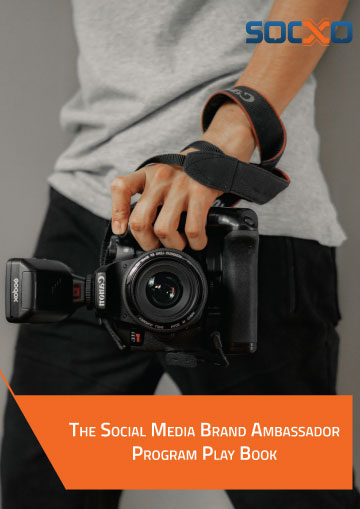

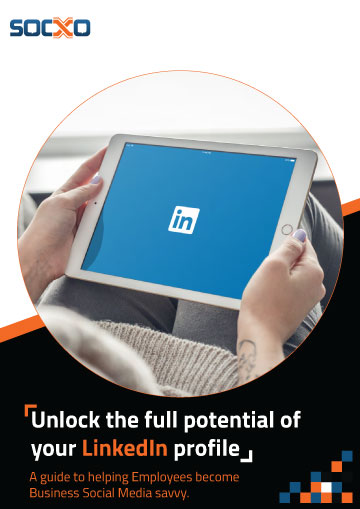

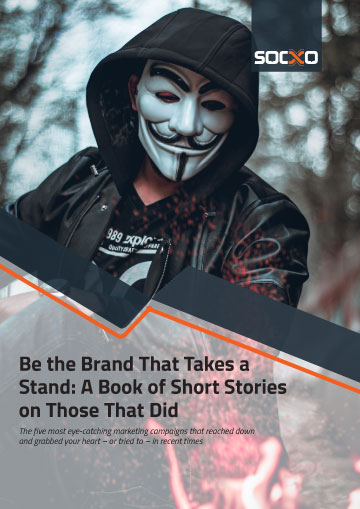



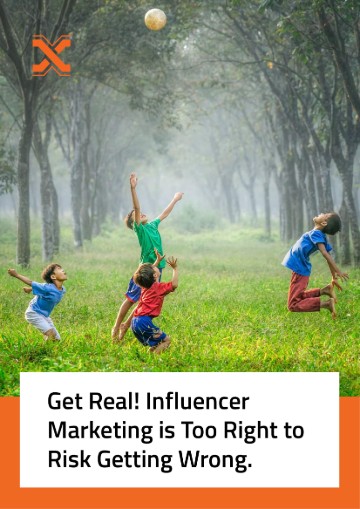



Blog Comments
Ajit
November 30, 2019 at 1:34 am
Great post. The value of nano influencers has not been considered so far and we have been lost in the glitz or semi celebrity pitches. The power of word of mouth is undisputed.
Carlos
January 8, 2020 at 7:43 am
Finally. A strategic post on the use of nano influencers and the evolving game of influencers. Good show.
The Trust Paradoxes; Edelman Trust Barometer 2020.
January 23, 2020 at 8:00 am
[…] Organic over paid. Unsurprisingly, search engines have emerged as one of the most trusted sources for news and information. In other words, the higher your organic reach, the higher your chances of gaining trust among your audience. […]
Celina Vest
February 12, 2020 at 12:17 pm
2018 influencer marketing spiraled out of control. Micro-influencers became mega-influencers, and prices for a single post skyrocketed. Some even inflated follower numbers, engagement rates and under-delivered on the content created for brands. If leveraged correctly, nano-influencers have the potential to deliver higher-quality content and engagement than mega-influencers, but the cost would be much lower.